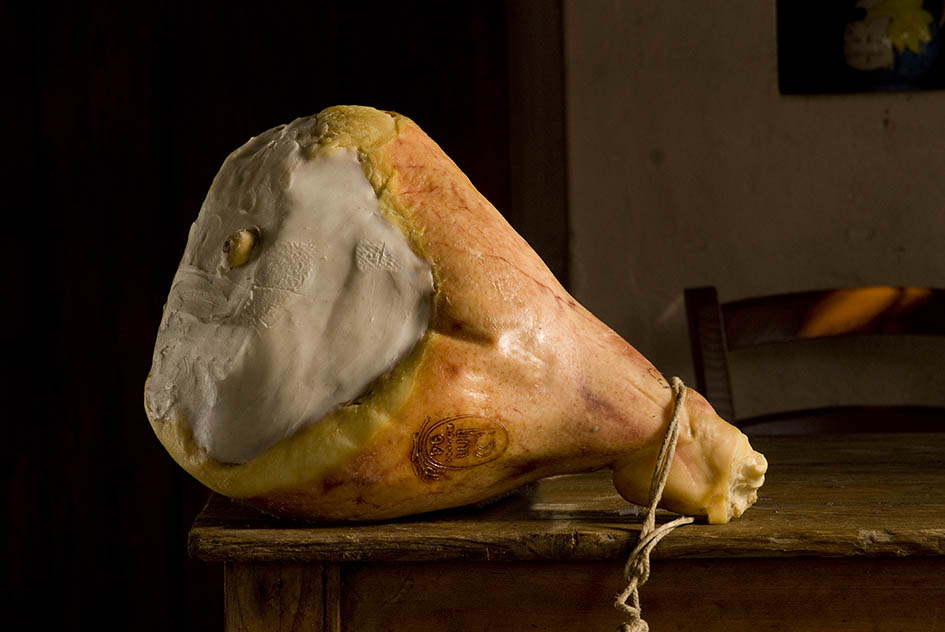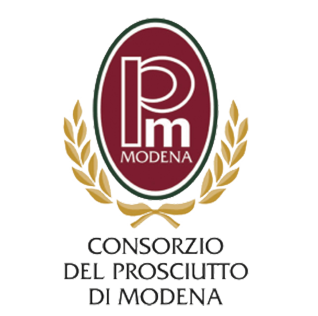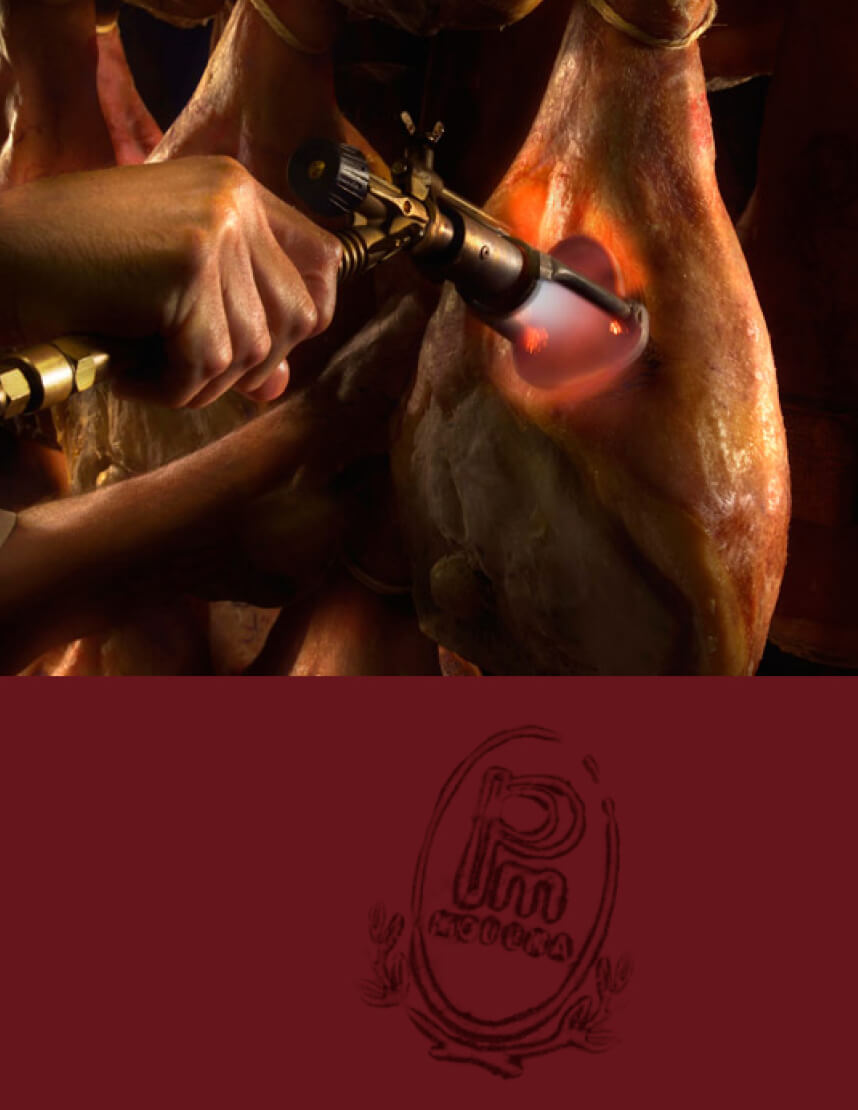
Consorzio del Prosciutto di Modena
Prosciutto di Modena DOP


HISTORY
Prosciutto di Modena dates back to very ancient times, probably even to the bronze age.
Early documents were produced by the Celts who introduced the practice of preserving meats with salt, and by the Romans who enhanced their banquets with porchetta (spicy, roasted suckling pig), hams and sausages. The Roman soldiers carried large quantities of salted pork meat and hams produced in the flourishing Po valley when they left on challenging military campaigns. The Modena area has long been a landmark for pork meat processing underpinned by its ancient and deeply rooted sausage and gastronomy tradition.
Prosciutto di Modena’s production area includes the hills and valleys situated around the orohydrographic basin of the river Panaro. Starting from the land at the foot of the mountains, it does not exceed an altitude of 900 m, also including the territories of the provinces of Bologna and Reggio Emilia.
Consorzio del Prosciutto di Modena
Viale Virgilio 55
41123 – Modena (MO)
Tel: 059 208661
Fax: 059 208660
Mail: info@consorzioprosciuttomodena.it
Web: www.consorzioprosciuttomodena.it
Product description
Prosciutto di Modena is characterised by its typical pear shape and medium weight in the range of 8-10 kg.
The slice is bright red in colour with an enticing fragrance that is intense but never strong. The full subtle savoury flavour is not salty.
The particular climate of the Apennines, with low humidity levels, favours seasoning that reaches high quality standards, endowing the product with highly appreciated organoleptic features.

Production technique
Prosciutto di Modena processing starts with trimming the fresh thigh. The ham thus acquires its typical pear shape and is ready for the salting phase.
This is performed by aspersion of sodium chloride in a quantity studied to yield a savoury but not salty flavour at the end of the salting phase. Salting operations are repeated twice for an overall period of about 20 days (first and second salt). Then the salted thighs are allowed to rest in dedicated rooms with controlled temperature and humidity for about 60 days during which the salt is homogeneously absorbed by the meat.
The thighs are then sent for actual salting in environments designed to ensure natural conditions of humidity and temperature by means of constant ventilation and aeration. The overall duration of seasoning is at least 14 months, though it can undergo minor variations based on the sizes of the hams.
Nutritional values for 100 g
(Source: INRAN, 2011)
| Protein | Lipids | Salt | Iron | Vitamin B6 | Energy |
|---|---|---|---|---|---|
| 15,7 g | 25 g | 2,4 g | 1,03 mg | 0,27 mg | 288 kcal |
| 30,2 g* | 8,9 g* | 6 g* | 1,24 mg* | 1,18 mg* | 201 kcal* |
* prodotto sgrassato